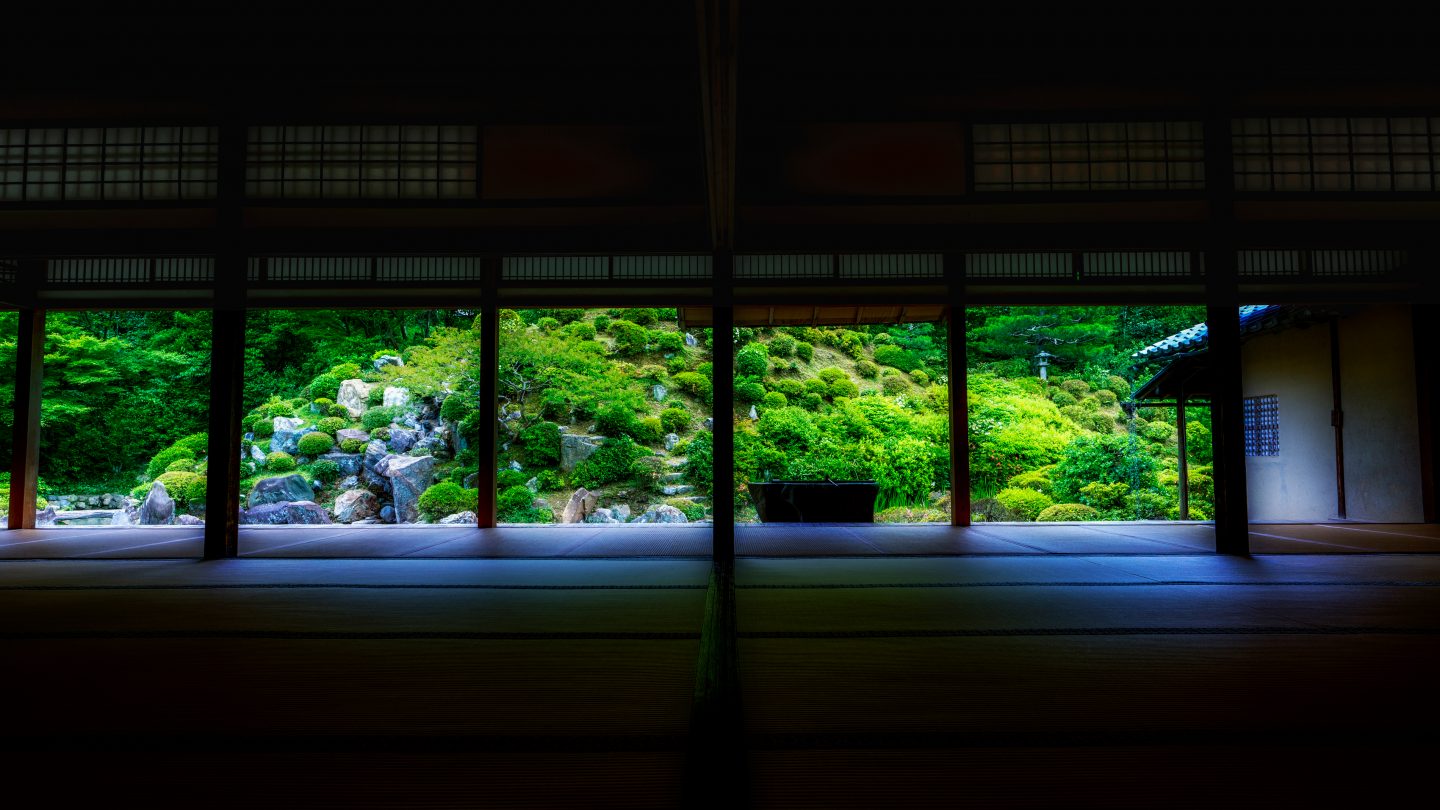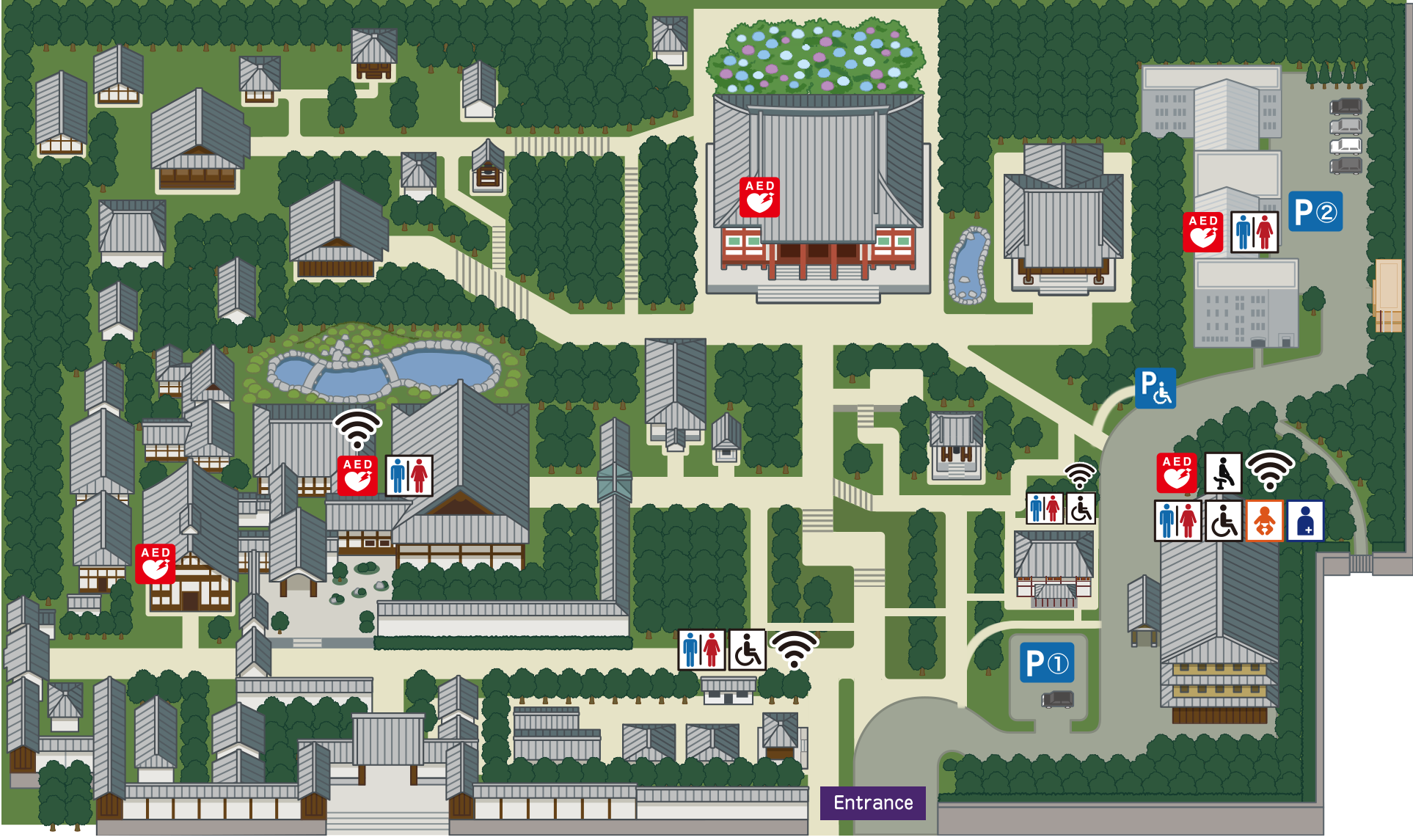Map of the Temple Grounds
A tall fence made with a foundation from an old stone wall, a solemn main gate facing Nanajodōri street, and temple
halls and buildings that stand with Amidagamine Mountain in the background. This is the main head temple of the
Shingon Chisan School, Chishakuin Temple. Located in the south of Kyoto’s “Higashiyama Sanjūroppō,” or “36 peaks of
Higashiyama,” the twenty or so temple halls and buildings are encircled by the deep green of trees that spread down
from the mountain’s peak. Here we will introduce the temple grounds. Why don’t you try walking down the paths of the
Chishakuin Temple grounds, deeply colored by a vibrant history?
![]()
![]()
![]()
![]() Toilet (Hours: 9:00am ~ 4:00pm)
Toilet (Hours: 9:00am ~ 4:00pm)
![]() Automated External
Automated External
Defibrillator(AED) ![]() Rest
Rest
Area ![]() Parking
Parking ![]() Free Wi-Fi
Free Wi-Fi
㉑The General Religious Affairs Office of the Shingon Chisan School is not open on weekends and holidays.
Click on the number of the facility/temple to see a picture and explanation.
- 1
-
Kondō Main Hall
Chishakuin Temple’s Central Building
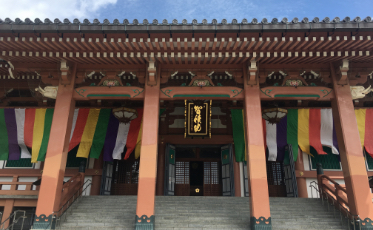
It is Chishakuin’s central building and is called the Kondō Main Hall. It was built in Shōwa 50 (1975) to
commemorate 1,200 years from the birth of Kōbō Daishi, the founder of the Shingon Buddhism. Enshrined in the
hall with the prayers of Shōwa is a statue of our principal buddha, the Dainichi Nyorai Buddha. Here is
where our everyday morning services take place and where many memorial services performed as the main head
temple of our school are undertaken. The building of the previous Kondō Main Hall was proposed by the 10th
head priest of Chishakuin Senkai-sōjo in the March of Genroku 14 (1701). Using an initial donation of 1000
ryō donated by Keishōin (the mother of the 5th Tokugawa Shogun, Tsunayoshi) as well as contributions from
student monks, it was constructed in the spring of Hōei 2 (1705). However, in Meiji 15 (1882), it was
destroyed by a fire.
- 2
-
Myōōden Hall
A Fudōdō Hall that looks out over a beautiful all-season garden.
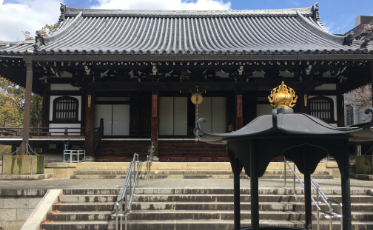
When the Abbot’s Chambers, which was being used as a temporary Main Hall, was burned down in a fire in Shōwa
22 (1947), the main hall of the famous Pure Land sect temple in Kyoto’s Shijo Teramachi, Daiun’in Temple,
was transferred to Chishakuin temple. That main hall was rebuilt in place where we now have the Kōdō Lecture
Hall, to replace the original Main Hall that had burned down in Meiji 15. That building is now called the
Myōōden Hall. It was moved to its current location in Heisei 4 (1992) with the rebuilding of the Kōdō
Lecture Hall. Its principal buddha is Fudō Myōō (Acalanātha) and the Myōōden Hall is also called the Fudōdō
Hall.
- 3
-
Kōdō Lecture Hall
A Kanjō anointment ceremony dojo-seminary and dojo-seminary for a variety of training.
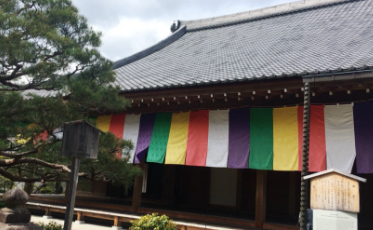
The Kōdō Lecture Hall is used as a Kanjō anointment ceremony (Abhisheka) dojo-seminary as well as
dojo-seminary for a variety of training. The current building was planned as a commemoratory work for the
850th anniversary of the death of Kōgyō Daishi in Heisei 4 (1992) and was completed in October of Heisei 7
(1995). The Kōdō Lecture Hall was formerly known as the Abbot’s Chamber and the foundations are made from
the Shōunji Temple’s Reception Hall which was gifted by the Shogun Tokugawa Ieyasu to the priest Gen’yū-sōjo
when he revived Chishakuin Temple in what is now Higashiyama Kyoto. The Shōunji Temple-based building then
burned down in July of Tenwa 2 (1682). It was rebuilt again in Jōkyō 1 (1684) using materials from the
Empress Consort Tōfuku Mon-in ’s old palace and Tainoya side residence, but that building was also
regrettably lost in a fire in Shōwa 22 (1947). In the fall of Heisei 20 (2008), the master painter Toshio
Tabuchi’s fusuma sliding door paintings were dedicated there.
- 4
-
Artifact Museum
A World of Magnificent National Treasures

Our country’s greatest masterpieces, national treasure wall paintings are housed here. Painted during the
Momoyama period by Hasegawa Tōhaku and his students, the pressed gold foil wall paintings which once
decorated the reception hall of Shōunzenji Temple now reside in Chishakuin Temple. The works such as
“Maple,” “Sakura,” “Pine and Sunset Hibiscus,” and “Pine Tree and Autumn Plants,” are designated national
treasures.
Take a moment to enjoy the magnificent work of these paintings in which nature has been
dynamically expressed in paint.
- 5
-
Ōjoin Reception Hall
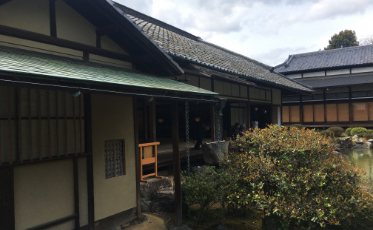
- 6
-
Scenic Garden
A piece of culture heritage which pioneered the use of artificial hills and garden ponds.

Known as a favorite of the famous tea master Rikyū, this garden was built in its original form during the era
of Shōunzenji Temple, the temple constructed by the feudal lord Toyotomi Hideyoshi, and the predecessor to
Chishakuin Temple. After that, once it became Chishakuin Temple, the garden was renovated by the 7th head
priest, Unshō-sōjo and it became known as the finest garden in Higashiyama. It is referred to as an
important legacy in the pioneering of artificial hills and garden ponds. An artificial hill was created
using the high and lows of the land and was made to represent China’s Mount Lu. A pond was dug in front of
the hill and an arrangement of stones were placed on the hillside and at its foot, completing the changes.
The Ōjoin Reception Hall, which was once decorated with the National Treasure wall paintings,
was built facing this garden. The garden’s pond extends under the veranda of the hall, just like a Tsuridono
fishing pavilion of Heian period’s Shinden-zukuri style architecture. This garden, which can be looked out
over from Ōjoin Reception Hall, is a treat to the eyes and the mind as it expresses the beauty
of the four seasons. It is especially splendid when the azalea (including Satsuki azalea) is in bloom from
the middle of April to the middle of June, which draws many tourists every year.
- 7
-
Daishidō Hall
Worshipping Kōbō Daishi (Kūkai)

The hall which enshrines the noble statue of Kōbō Daishi (Kūkai), the founder of Shingon Buddhism. It is said
an initial donation of 300 ryō was given by the high priest Shinyū-hōin of Hōjiin Temple (Asakusa, Edo), to
put towards the cost of Daishidō Hall, while the rest was covered by the fund-raising efforts of the high
priest Taitsū-hōin of the administrative temple Atago Enpukuji Temple and the high priest Junga-hōin of
Shinpukuji Temple. The completion of Daishidō Hall was celebrated while Taitsū-hōin was in place as the 24th
head priest of Chishakuin Temple in the 1st year of Kansei (1789).
- 8
-
Mitsugondō Hall
Worshipping the Restorer of the Shingon Buddhism.
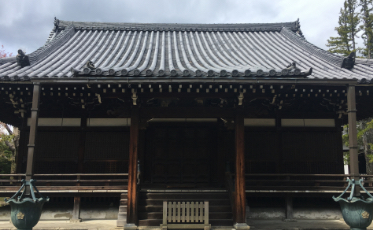
Mitsugondō Hall, which enshrines the noble statue of the Shingon sect’s restorer, Kōgyō Daishi(Kakuban), was
built in Kanbun 7 (1667) with the donations collected from sect temples and student monks by the 7th head
priest of Chishakuin Temple, Unshō-sōjo. “Mitsugondō Hall,” written in Unshō-sōjo’s own handwriting in
Kanbun 12 (1672) and framed, hangs on the front entrance.
- 9
-
Hall of Worship
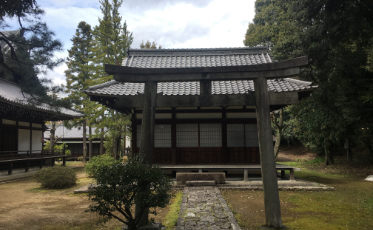
The Hall of Worship, located south of the Sanjinja Main Shrine, is said to have been erected by the 3rd head
priest Nichiyo-sōjo. It was moved to its current location by the 7th head priest Unshō-sōjo.
- 10
-
Gumonjidō Hall
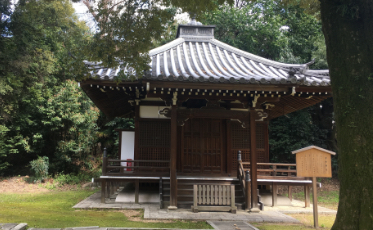
It is also referred to as Monjudō Hall or the Homa Hall. It was constructed in Kaei 4 (1851). Its principal
buddha is Kokūzō Bosatsu (Akasagarbha), but it also enshrines Monju Bosatsu (Mañjuśrī) and Fudō Myōō
(Acalanātha).
- 11
-
Kōmyōden Hall
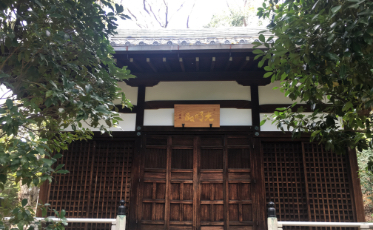
Located on the east side of the Kondō Main Hall, Kōmyōden Hall now houses enshrined remains. Every year on
August 10th, a Buddhist funerary service to enshrine remains is held.
- 12
-
Shōrōdō Bell Towers
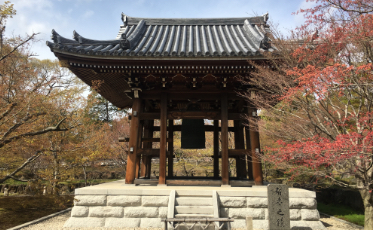
In Heisei 10 (1998), a bell called the “Bell of Chisen” was donated and a Shōrōdō bell tower was built thanks
to the contributions of Chisenkai Association, a group of alumni from the old religious learning institute,
Chisan Senmongakkō (Vocational School). In addition, there is a Shōrōdō bell tower next to the Unshō-gura
Storehouse, which was built in Tenwa 2 (1616).
- 13
-
Visitor Admissions Office
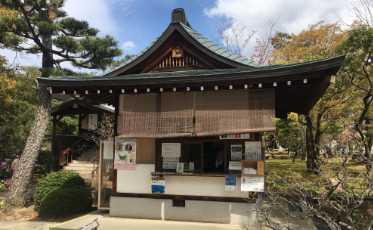
Visitor Admissions Office for the Treasury/Scenic Garden
- 14
-
Reception Office
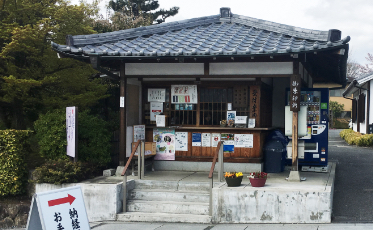
Located on the left side of the Chishakuin Temple entrance, the reception office accepts the offerings of
sutras. It is also the Shuin temple stamp site as it handles the Shuin stamps of the various sacred sites
Chishakuin Temple is registered as. In addition, the Reception Office accepts applications for prayers and
merit transference (Pariṇāmanā) as well as issues charms. (Until 4:00pm)
- 15
-
Main Gate
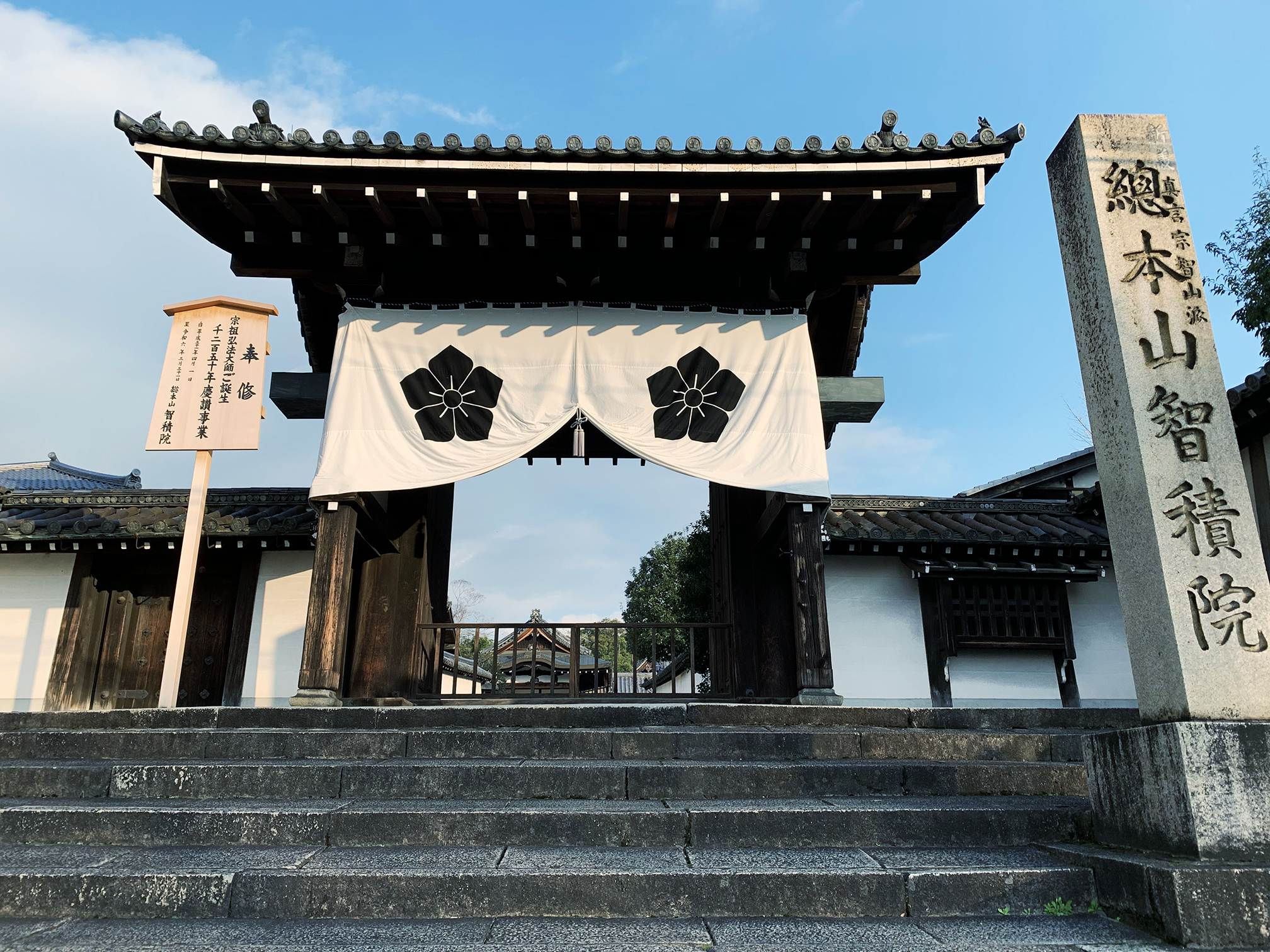
Materials from Empress Consort Tōfuku Mon-in’s old palace were used in the rebuilding of the Abbot’s Quarters
lost in a fire in Tenwa 2 (1682). It is said that this Main Gate was also rebuilt using the aforementioned
materials.
- 16
-
Unshōgura Storehouse
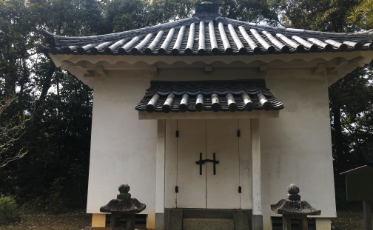
This storehouse holds the writings and documents researched and written by Unshō-sōjo, the 7th head priest of
Chishakuin Temple. The storehouse was constructed in Enpō 1 (1673) according to the wishes of Unshō-sōjo
himself. Now, there is a seated statue of the head priest enshrined within to remember his prestige and
virtue. On September 10th, the anniversary of his death, the doors are opened to the public free of charge,
and a memorial ceremony is performed.
- 17
-
Sanjadan Altar
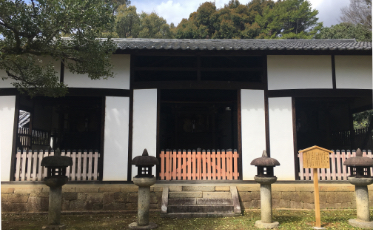
Right: Kasuga Daimyōjin Shrine Center: Sanbugongensha Shrine Left: Kushamyōjin Shrine Sanbugongen is
Chishakuin Temple’s main local Shinto deity and has been its top guardian deity since the time of Negoro’s
Daidenbōin Temple.
- 18
-
Shinden Reception Hall
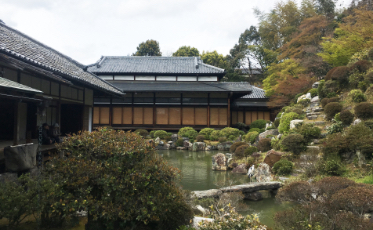
This is the building that the head priest of Chishakuin Temple uses to greet guests of honor. It was erected
in Shōwa 33 (1958) and the interior is decorated with the wall paintings of Inshō Dōmoto, a master painter
in Kyoto’s artist community. Various paintings are on display. “Ladies at Tea,” depicting women in western
and Japanese garb, and “Pine, Cherry Blossom, and Willow,” are both painted in rich, gold colors in contrast
to “Morning Glory and Chicken,” “Eggplant and Chicken,” and “Running Water and Black Kite,” which are
painted with ink. The paintings are usually not available to the public, but there is a special showing
during the yearly moon-viewing gathering.
- 19
-
Clerical Office (Head Priest’s Temple Quarters)
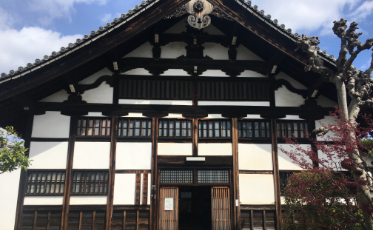
- 20
-
Kabuki-mon Gate
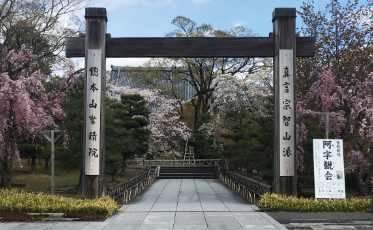
The Kabuki-mon Gate was donated to the temple by its supporters to commemorate the 1150th anniversary of the
death of Kōbō Daishi, the founder of Shingon Buddhism.
- 21
-
The General Religious Affairs Office of the Shingon Chisan School
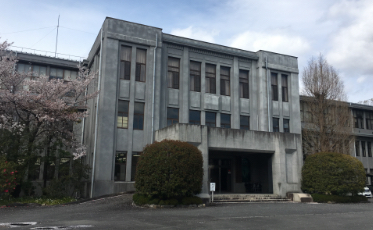
- 22
-
Chishakuin Kaikan Temple Accommodations
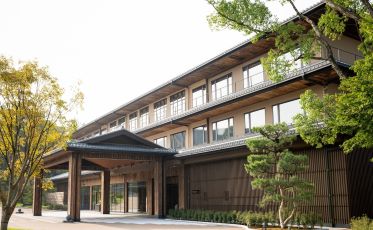
Built in Shōwa 41 (1966), the much beloved Chishakuin Kaikan Temple Accommodations, which stood for around 50
years and grown old, was rebuilt, giving it a new life. With more room types, such as Western and mixed
Japanese and Western styles, it is more comfortable than ever. Here you can experience a morning scripture
service, unchanged from 400 years ago and separated from the noisy hustle and bustle of the world. Here
awaits extraordinary experiences, guided directly by the monks themselves, to see the insides of the famous
scenic garden and the national treasure wall paintings of the Hasegawa school founded by Hasegawa Tohaku. Click here to make a reservation.
-
Hydrangea garden
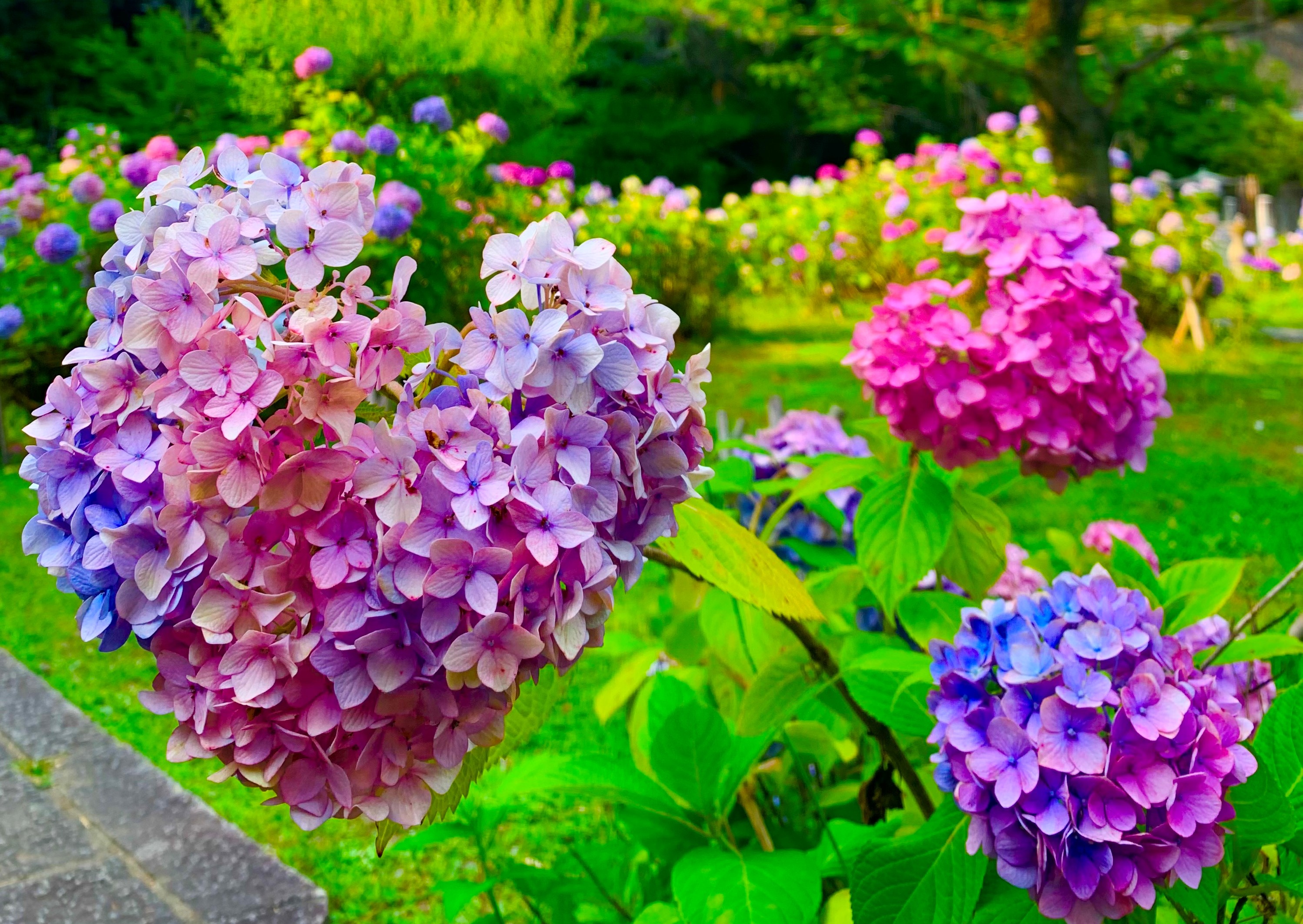
You can enjoy colorful hydrangeas from late May to late June.
The best time to see them is usually during the Aoba Festival on June 15th.
In addition, in the early morning, the sounds of birds chirping and the monks chanting sutras echo
throughout the temple grounds, creating a solemn atmosphere.
- 20
-
Chisan Library


